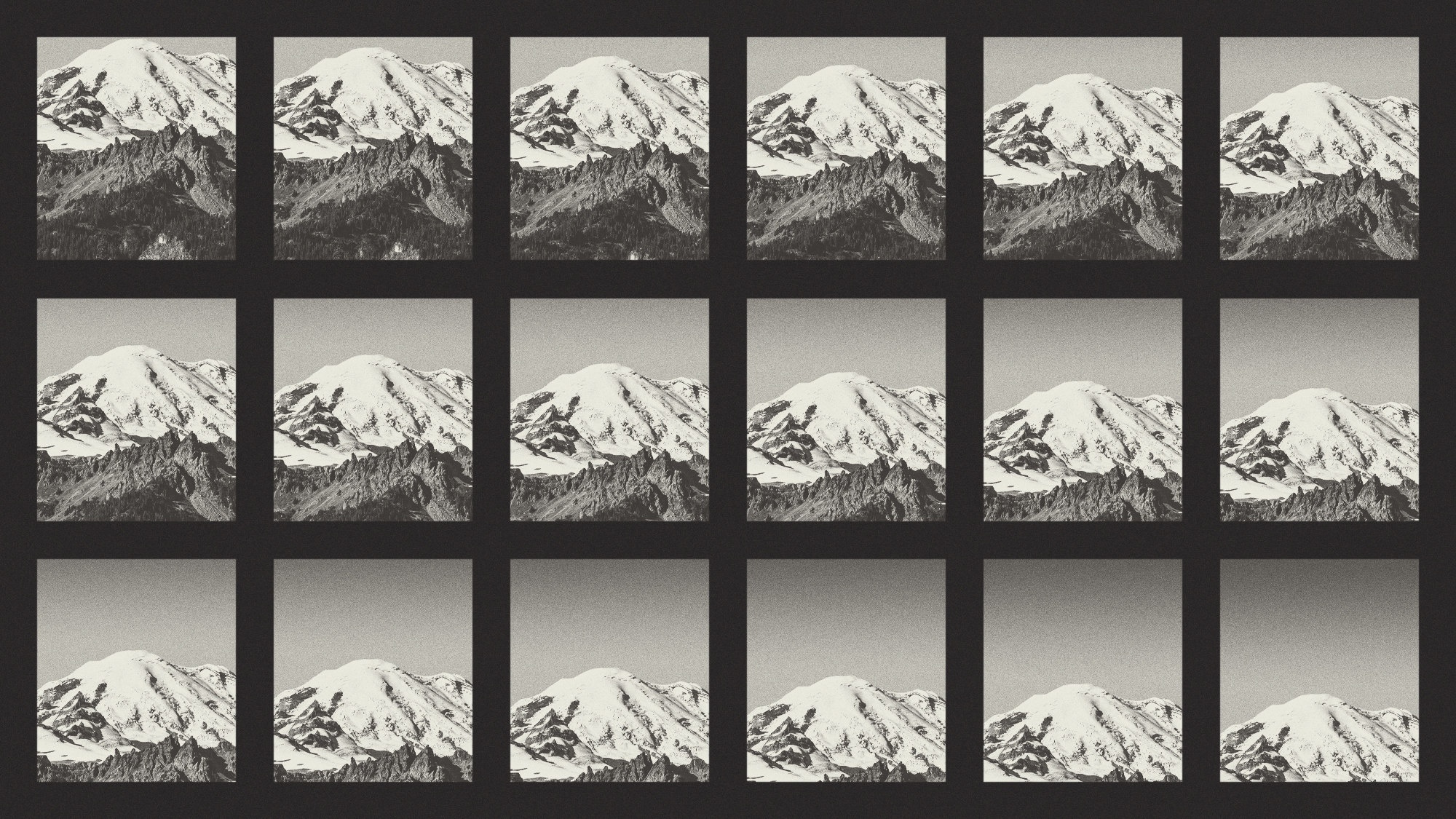2022's extreme weather
Another record-breaking year on planet Earth


After four dry rainy seasons, Somalia is experiencing its worst drought in 40 years — that, coupled with an increase in food prices, is causing humanitarian officials to warn that many people may soon face famine unless there's an increase in funding and humanitarian aid. Here's everything you need to know:
What's causing the drought in Somalia?
Scientists are not entirely sure if this drought is directly connected to climate change, The New York Times reports, primarily because due to years of conflict in the area, there isn't enough rainfall data to look at. Still, the Times' Raymond Zhong says, scientists do expect the "frequency, duration, and intensity of droughts in the region to increase if global warming reaches higher levels. The warmer atmosphere would mean the land gets drier and stays drier. There would be bigger swings in rainfall. So even if this drought wasn't made more likely or more intense by global warming, future ones might easily be."
Humanitarian agencies, however, disagree. Jan Egeland, secretary-general of the Norwegian Refugee Council, told Democracy Now! this is "a creeping, devastating drought, which is coming after four failed rainy seasons. So it's climate change. It's the climate change that we in the industrialized world caused. And who is dying from this? The children of Somalia, from a people who did nothing to cause climate change." Mohamud Mohamed, Save the Children's country director in Somalia, said in February that previous events show "the ultimate culprit is climate change." Somalia has "always had droughts," he explained, and "Somalis have always known how to deal with them — they struggle, they lose livestock, they count their losses, and then they bounce back. But now, the gaps between droughts are shrinking. It's a killer cycle and it's robbing Somali children of their future."
The Week
Escape your echo chamber. Get the facts behind the news, plus analysis from multiple perspectives.

Sign up for The Week's Free Newsletters
From our morning news briefing to a weekly Good News Newsletter, get the best of The Week delivered directly to your inbox.
From our morning news briefing to a weekly Good News Newsletter, get the best of The Week delivered directly to your inbox.
How many people are facing hunger in Somalia?
The drought — which has already displaced 560,000 people — is leading to widespread hunger in Somalia, and in mid-June, it was estimated that nearly half of the 16 million people believed to be living in the country do not have enough food to eat. In November 2021, a Save the Children humanitarian assessment found that almost 700,000 camels, goats, sheep, and cattle had died from drought-related causes in just two months — this has hurt families in two ways, as they lost food and a source of income.
On top of that, Somalia imports more than half of its food, and almost all of its wheat comes from Ukraine and Russia. That supply chain has been disrupted since Russia invaded Ukraine in February, and because of the war, the cost of food has steadily increased in Somalia in the last several months. UNICEF says due to the pandemic and the invasion of Ukraine making ingredients and packaging more expensive, it's projected that the price of a peanut-based paste given to children to help with malnutrition will jump up 16 percent.
How are the drought and food scarcity affecting children?
The situation for children is dire, with kids dying every day from malnutrition. Adam Abdelmoula, the U.N. humanitarian coordinator for Somalia, told Democracy Now! last week that 1.5 million children under the age of 5 are already malnourished, "and we expect that 366,000 of them may not survive through the end of September of this year."
Claire Sanford, deputy humanitarian director for Save the Children, told The Guardian last week that she has met multiple mothers in Somalia who have had to bury more than one child this year due to malnutrition. "I can honestly say in my 23 years of responding to humanitarian crisis, this is by far the worst I've seen, particularly in terms of the level of impact on children," Sanford said. "The starvation that my colleagues and I witnessed in Somalia has escalated even faster than we feared."
A free daily email with the biggest news stories of the day – and the best features from TheWeek.com
The Times spoke with one woman, Hirsiyo Mohamed, who saw her crops fail and goats die because of the drought. A mother of eight, she spent four days walking from her home in southwestern Somalia to an aid camp in the town of Doolow. Before she arrived, her 3-year-old son, Adan, died, after begging her for food and water. "We buried him and kept walking," Mohamed told the Times. Once at the camp, her 8-year-old daughter, Habiba, already suffering from malnutrition, came down with whooping cough and died. "This drought has finished us," Mohamed said.
Is famine in Somalia inevitable?
The Integrated Food Security Phase Classification defines famine as "the absolute inaccessibility of food to an entire population or sub-group of a population, potentially causing death in the short term." Abdelmoula said there are eight districts in Somalia that are already experiencing famine, at a "catastrophic" level, and he warns "that number is bound to increase, unless — unless — we are able to scale up our response plan in a very, very major way." This is especially critical as the next rainy season is also expected to produce below-average precipitation.
What can be done to help Somalia?
The country needs money, urgently. Michael Dunford, the World Food Program's regional director for east Africa, made an appeal to G7 leaders last week, saying there must be a "massive scaling-up" of aid in order to avoid total catastrophe. Immediately, Somalis need food and water, and money must also be set aside for other measures, like protecting livestock and reforestation. Funding has been slowly trickling in; the U.N. says aid donors have pledged just 18 percent of the $1.46 billion it needs for Somalia.
The World Bank recently approved $143 million in International Development Assistance financing, which will deliver cash to vulnerable households. Individuals can also donate to organizations like Save the Children and the Somalia Humanitarian Fund.
Are there other countries in Africa facing this drought?
Yes. While the situation is most severe in Somalia, the drought is also affecting millions of people in Kenya and Ethiopia. The World Food Program says in Ethiopia, "hunger is tightening its grip on more than 20 million Ethiopians who are facing conflict in the north, drought in the south, and dwindling food and nutrition support," and it is running out of money to keep up its operations helping "acutely malnourished" women and children.
Catherine Garcia has worked as a senior writer at The Week since 2014. Her writing and reporting have appeared in Entertainment Weekly, The New York Times, Wirecutter, NBC News and "The Book of Jezebel," among others. She's a graduate of the University of Redlands and the Columbia University Graduate School of Journalism.
-
 Received a gift card this holiday season? Here’s how to maximize it.
Received a gift card this holiday season? Here’s how to maximize it.The Explainer Make the most of your present
-
 ‘Lumpy skin’ protests intensify across France as farmers fight cull
‘Lumpy skin’ protests intensify across France as farmers fight cullIN THE SPOTLIGHT A bovine outbreak coupled with ongoing governmental frustrations is causing major problems for French civil society
-
 The best books of 2025
The best books of 2025The Week Recommends A deep dive into the site of a mass shooting, a new release from the author of ‘Atonement’ and more
-
 Crest falling: Mount Rainier and 4 other mountains are losing height
Crest falling: Mount Rainier and 4 other mountains are losing heightUnder the radar Its peak elevation is approximately 20 feet lower than it once was
-
 Death toll from Southeast Asia storms tops 1,000
Death toll from Southeast Asia storms tops 1,000speed read Catastrophic floods and landslides have struck Sri Lanka, Indonesia, Thailand and Malaysia
-
 Can for-profit geoengineering put a pause on climate change?
Can for-profit geoengineering put a pause on climate change?In the Spotlight Stardust Solutions wants to dim the sun. Scientists are worried.
-
 How will climate change affect the UK?
How will climate change affect the UK?The Explainer Met Office projections show the UK getting substantially warmer and wetter – with more extreme weather events
-
 Can the UK do more on climate change?
Can the UK do more on climate change?Today's Big Question Labour has shown leadership in the face of fraying international consensus, but must show the public their green mission is ‘a net benefit, not a net cost’
-
 Did Cop30 fulfil its promise to Indigenous Brazilians?
Did Cop30 fulfil its promise to Indigenous Brazilians?Today’s Big Question Brazilian president approves 10 new protected territories, following ‘unprecedented’ Indigenous presence at conference, both as delegates and protesters
-
 Can the world adapt to climate change?
Can the world adapt to climate change?Today's Big Question As the world gets hotter, COP30 leaders consider resilience efforts
-
 Taps could run dry in drought-stricken Tehran
Taps could run dry in drought-stricken TehranUnder the Radar President warns that unless rationing eases water crisis, citizens may have to evacuate the capital
